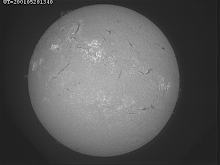Honestly, it is going to take 750 years to recover from the long struggle to reach the Moon.
Please, people, do not fight more than necessary.
That long struggle for the Moon began before life emerged from the Oceans, when ancient octopuses and other neural and chordate animals swam and anticipated in the ebb and flow of Moon-driven tides. Progress toward the goal of reaching the Moon became significant when animals emerged onto land, and sensed the Moon apart from the waters. That was hundreds of millions of years before England emerged from the seas west of Russia.
Attaining the Moon, whatever it was - whether it was full of predators, prey, false or true beings of any kind, gods or demons or space monsters, gardens or forests or seas - was an instinct during the passage of at least three complete orbits of the Solar System and Earth around the Milky Way galaxy. As an instinct, it was a part of every pounce on prey, and so was embedded deep in the savage zero-sum win-or-lose predation that characterized all carnivorous competition.
The first constructions were by marine animals, and included diatoms and corals. Instinct did not plan, and it did not even grope for goals other than food or mates. That's why corals never even attained the dreams which arose from being drawn back and forth by the Moon, though they did leave recognizable vestiges in layers of their limestone skeletons.
The final (because successful) venture to reach the Moon did not consists of adaptation of form, but emerged from artificial constructions. The first durable constructions were of stone- usually carved stone, because the natural forms of rock simply collapsed into rocky earth and did not remain recognizable as artificial constructions. Carved stone-at first, often the soft sandstone-were those most likely to remain recognizable as constructions by living beings. That began between five and ten thousand years ago, and the exact date is not important.
Relative approximate dates are extremely important in understanding the world's position now. That's because they indicate which of the several celestial spheres, all of which have to do at different time rates with great ephemeral cycles, were those most nearly timing the developments. The fact that serious rational progress-progress by measured and planned actions- did not occur until three galactic cycles had passed, meant that rational activity had to be accomplished on shorter time scales. These would have to be determined by the establishment of constructions which would endure. The Pyramids were deliberately constructed, with specific angles having to do with positions of various stars and of the Milky Way Galaxy's dazzling Galactic Center.
Little else mattered than that those pyramids were three in number-so that whatever progress was made in the future, it would have to begin knowing that counting had already begun; -that the angle between the Galaxy and the Ecliptic was already known and thus being taken into account; and that the pyramids were constructed by human beings and were obviously designed to be durable. The project was open ended and it was declared, its execution had already been put into effect and it would continue until its goal was met. Their size meant that it was intended to be an eternal world goal.
Sad thing is, they did not place any limit on the competition at all, since no such limit was known. Because of that, it was far easier than it should have been, to fall into zero sum, predator-prey competition, and that meant forced labor and war were among the norms accepted by the early planners of the Moon Projects.
The actual flights to the Moon demonstrated clearly that it was never necessary to deliberately kill anybody to fly beyond the atmosphere and to the Moon, then bring them back. It could not be avoided that some would be lost in accidents, and the astronauts lost are carefully remembered. Those losses to accidents are thought to have been unnecessary. What is clear is that in principle it was never necessary to go to war to reach the Moon, yet the Earth's people did war among themselves, and many were lost. More war now, in the aftermath of the successful flights to the Moon, is not desired by anybody.
The important fact is that the Moon actually was reached. An implication which slowly comes into mind is that it will take three of the relevant time domains to come for the Earth to return to peace, health and normalcy. If the galactic rotation had failed, then the next shorter time domains which are nonetheless longer than previously calculated are probably important. The discovery of the planets Uranus, Neptune and Pluto did the trick. That's the order proceeding outward from the Sun.
Since 1975 is over 35 years in the past, Jupiter is a good example of a heavy, outer, important planet that has gone round the sun three times since the end of the manned Apollo Moon Project, with its highly successful flights, landings, exploration by men, and safe return to Earth. That interval ended three orbits of the great planet Jupiter around the Sun since the Moon flights. Jupiter is one of the heavyweights of the Solar System and was well known to the ancients.
The passage of more than thirty years means that Saturn has gone round the Sun one complete orbit already. Many people alive today will be alive in 2065, when Saturn completes three of its powerfully influential orbits around the Sun (and Earth's entire orbit) - since the completion of the Apollo moon flights. If the world can just wait until 2065 before another significant war, it will permit much better and more comprehensive agreement throughout the world under that ancient, well known planet as well.
The orbital periods of these planets are the basis for estimates of the time required for tetrapodal species like mankind to come to quiescence and tranquility. The longest, Pluto, orbits the Earth and Sun in 248 years; Neptune orbits in 165 years, and Uranus orbits us in 84 years. That order is inward from the stars. I used it here because this reasoning process either approaches the entire problem from a transfinite view, exterior objects first, then visible stars which are all in the Milky Way, then planets, and then Earth', or often in the reverse order, Earth first, then planets, then stars and then exterior universe.
The estimate is based on a common conventional calculation, that three such intervals will bring a system so near to quiescence that remaining fluctuations are typically exceeded by other factors entirely.
This results (248*3=744 years for Pluto; 165*3= 495 for Neptune, and 85*3=255 for Uranus) are more useful in the secular temporal domain when rounded off to 750, 500 and 250 years.
In calendar order, the years in the future when these intervals that will mark the returning to peace, for the three invisible outer planets, are
2250 A.D. will mark the Uranian peace;
2500 A.D will mark the Neptunian peace; and
2750 A.D. will mark the Plutonian peace.
The moral of the story is, don't expect too much peace from your neighbor, or more than he can bear, until he is reassured about the past, and the event of successful attainment of the Moon, and the future-that it is not the past, and that Peace is possible.
Neither should thou lose faith, nor attempt hurry to the stars. They are a far different, greater and more distant goal than the Moon, and even much different, greater and more distant that Mars or any of the other planets. The stars a a very different thing-a different goal, a different dream, and a different future.
Subscribe to:
Post Comments (Atom)








No comments:
Post a Comment